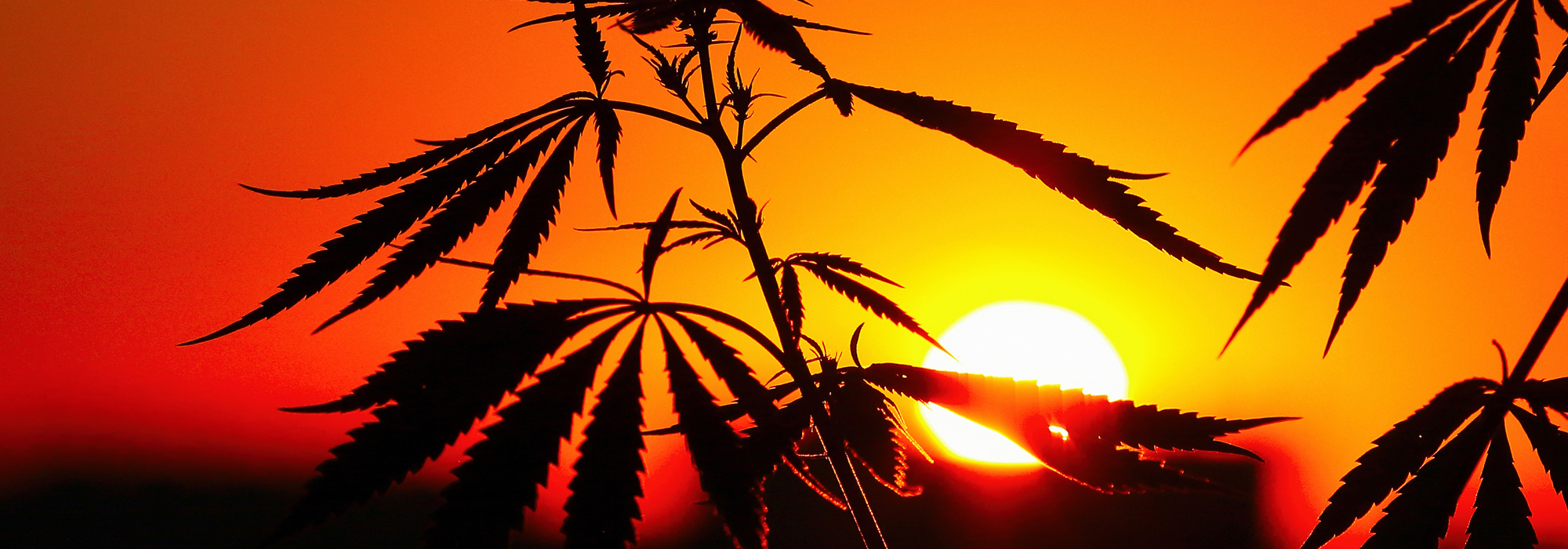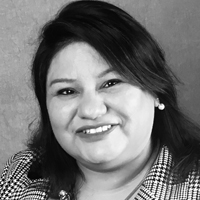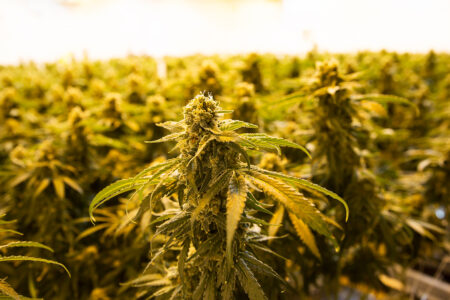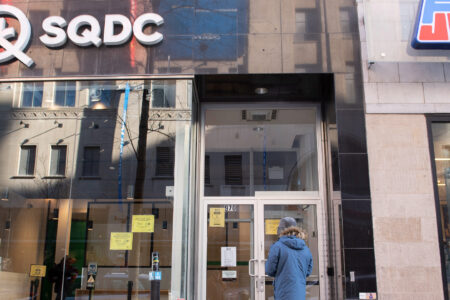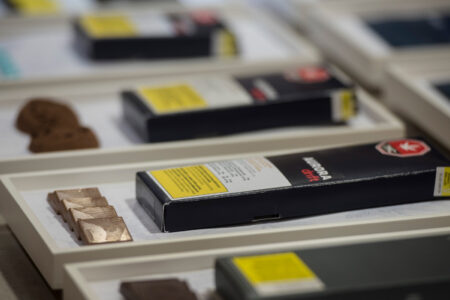
As Indigenous communities grapple with options for alleviating poverty and spurring job creation, the economic potential of legalized cannabis is a compelling topic. How can our people participate in this regulated industry, from growing the plants through to retail sales? At Chippewas of the Thames First Nation (CTFN), near London, Ontario, we have spent years conducting research and negotiations around the closely related issue of tobacco sales, and how our community might participate in regulation and taxation. The lessons learned through that process could also inform how we can achieve clear regulations of our own for the on-reserve cannabis industry.
The provincial and federal governments could also hit two birds with one stone if they come up with a comprehensive system for regulating both cannabis and tobacco sales in Ontario on-reserve. The upcoming legalization of cannabis, then, could be an important catalyst in the recognition of our inherent right to self-government and a true nation-to-nation relationship.
Tobacco products sold on-reserve in Ontario today remain untaxed and largely unregulated. Brand name tobacco products are legally sold tax-free on-reserve to persons with Indian status. Meanwhile, Indigenous-owned tobacco growing operations and distribution systems have sprung up, but their products are considered contraband by the government and the operators are punishable under the Criminal Code. This is despite the fact that growing tobacco is an important part of our culture. With both types of tobacco, brand name and Indigenous-grown, $1 billion in potential taxes is going uncollected by either provincial or Indigenous governments.
Since 2012, CTFN has been engaged in a pilot project with the Ontario government that would lead to a self-regulatory framework for tobacco on-reserve. Ontario was interested in a dialogue with First Nations to better understand the tobacco issue on reserves, and to develop options for modernizing the cigarette allocation system (which allows for discounted products to be sold on-reserve) while simultaneously exploring options for self-regulation. CTFN and the other pilot community, the Mohawk Council of Akwesasne, saw this as an opportunity. CTFN has been able to explore the cultural perspectives, the economics of cigarette pricing and how other jurisdictions have approached the issue.
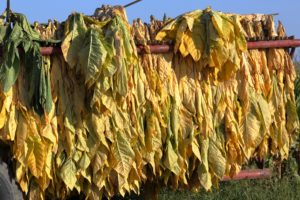
This led to CTFN’s developing a proposal that focused on community governance and a cigarette levy system that would result in revenues coming back to the First Nation. The previous Ontario Liberal government was supportive of the tobacco project with First Nations. CTFN is waiting to hear the plans of the new provincial government.
Our proposal to the province recommends a phased-in Indigenous licensing framework that would cover the full supply chain, including growing and processing raw-leaf tobacco, manufacturing and retail sales. These activities are already occurring on reserves in Ontario. Manufacturing is a key activity to be regulated, as manufacturers are responsible for stamping products for excise and provincial taxes, and this is the point at which tobacco taxes are levied.
Under CTFN’s proposal, we would create an on-reserve tobacco law that would be equivalent to provincial laws, but it would be the First-Nations-licensed manufacturers that apply the stamp indicating taxes have been levied and that pass the money on to the First Nations government. This system would require cooperation from Ontario and the federal government as well as broader First Nations support.
CTFN researched similar arrangements in the US, where there are taxation compacts between tribal councils and state governments. In Canada, this relationship would be based on upholding treaty relationships and our inherent right to self-government, as protected under section 35 of the Constitution. We see this coming together in the form of an overarching document or memorandum of understanding with the Department of Finance Canada and the Canada Revenue Agency. Such an agreement would allow the province to enter into agreements with First Nations around self-regulation and to step away from its current role in levying taxes and regulating retail sales, among other things.
CTFN would also have an agreement with our own people that would ensure tobacco is regulated based on principles of fairness, the honouring of traditional or medicinal uses of tobacco, community benefit and revenue sharing. We would also ensure reporting and accountability systems that would consist of reporting back to community and obtaining an independent auditor’s certificate for all cigarette sales on-reserve. We would share the certificate with Ontario to demonstrate the overall integrity of the system.
Obtaining community consent from the outset would enable an Indigenous licensing commission with powers delegated to it by the First Nation to create a self-regulatory system. The licensing commission would be created by the First Nation and responsible for ensuring compliance with the First Nation’s own tobacco law, in a way that would remove Chief and Council involvement for issues relating to the issuance of licences and compliance matters on-reserve. The First-Nations-run licensing commission would also address issues such as where tobacco can be consumed on-reserve, and who it can be sold to.
CTFN research also identified that community readiness and capacity is essential for the creation and upholding of its own tobacco law and enforcement systems, including a First Nation “stamp” that indicates a levy or tax was paid to a First Nations government. Most First Nations do not have local by-laws or by-law or compliance officers who would be able to uphold a tobacco law and ensure that only stamped products are sold at reserve retail outlets. These governance functions have to be developed and created and are integral to self-regulation and upholding standards. (The fact that reserves are governed by the federal Indian Act and don’t fall under provincially administered enforcement regimes means that little has been done to curb the widespread manufacture and sale of unregulated “rollie” cigarettes.) Furthermore, cultural sensitivities related to compliance and law enforcement need to reflect the local community. We’ve worked with other agencies in Ontario to get the provincial tobacco law translated into the Ojibway language to develop community education tools that will also focus on smoking cessation.
So where does cannabis enter into this picture? With agricultural land bases, highway networks and a solid understanding of the economics and price elasticity of demand, which is affected by taxation, First Nations are well placed to enter the cannabis industry — just as they have done with tobacco.
But as with tobacco, the federal government has left recreational cannabis industry regulations with the provinces. Our community hopes that we can learn from the tobacco pilot project in Ontario, and that the legalization of cannabis will be a catalyst for changing the regulatory and taxation systems for other products that have shut our nations out from ways to tap into economic prosperity.
Building Indigenous self-government is the best alternative to the Indian Act. Self-governance puts First Nations in a more proactive role in self-determining their future and promoting public interests.
This article is part of The Economics of Canadian Cannabis special feature.
Photo: Shutterstock/By PRO Stock Professional
Do you have something to say about the article you just read? Be part of the Policy Options discussion, and send in your own submission. Here is a link on how to do it. | Souhaitez-vous réagir à cet article ? Joignez-vous aux débats d’Options politiques et soumettez-nous votre texte en suivant ces directives.



